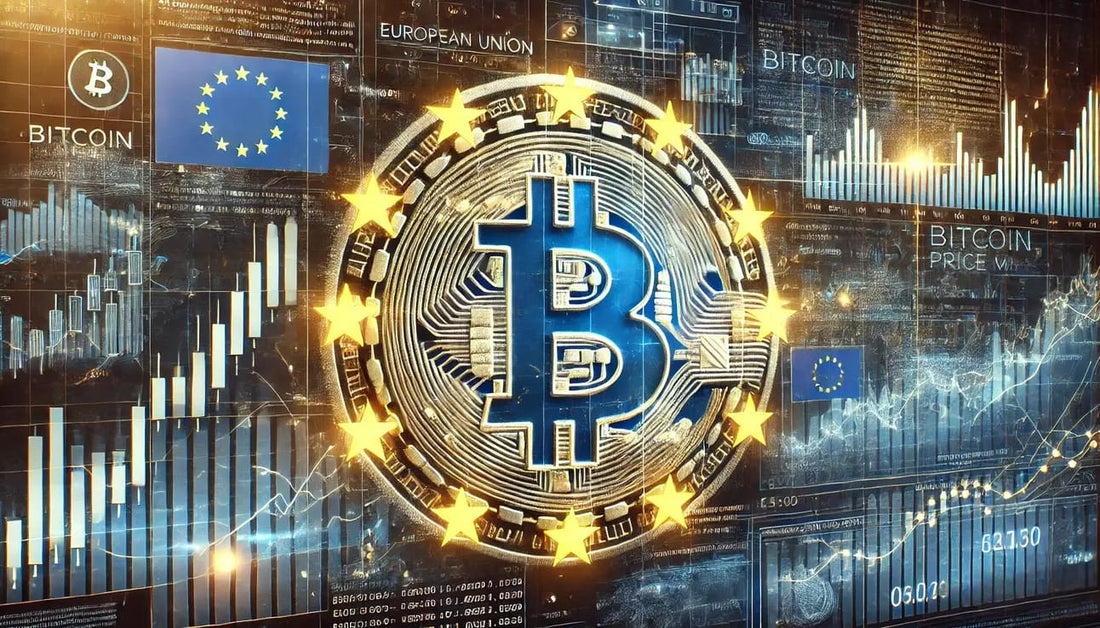BlackRock’s decision to expand its Bitcoin offerings into Europe through the iShares Bitcoin Exchange-Traded Product (ETP) may not have shaken markets overnight—but make no mistake, this is no minor move.
On March 25, 2025, the world’s largest asset manager began trading its Bitcoin ETP on European platforms including Xetra, Euronext Amsterdam, and Euronext Paris. While early adoption has been tepid compared to the U.S. launch, the strategic intent is crystal clear: BlackRock is laying the groundwork for pan-European crypto institutionalization.
The U.S. vs. Europe: Two Very Different Receptions
BlackRock’s U.S. iShares Bitcoin Trust ETF (IBIT) has become a dominant force, accumulating $49 billion in assets and capturing over half the U.S. spot Bitcoin ETF market. That success story was fueled by robust institutional demand, enthusiastic retail interest, and regulatory progress.
Europe, by contrast, is still catching its breath. While the launch was welcomed, it hasn't seen the surge of inflows that many expected. But this divergence isn’t about interest—it’s about infrastructure, timing, and trust.
Reading Between the Numbers: Why Europe’s Slower
1. Fragmented Financial Landscape
Europe’s financial markets are more decentralized and nationally governed, making cross-border product adoption more complex. The lack of a unified approach to ETFs and digital assets has historically slowed pan-European investment flows.
2. Regulatory Fog Still Looms
Despite the promise of the upcoming MiCA (Markets in Crypto-Assets) regulation, the current environment remains murky. Institutional investors are reluctant to move big capital into a space where rules are still evolving.
3. Institutional Conservatism
European institutions tend to be more conservative, particularly around novel assets like Bitcoin. Without strong regulatory backing and proven liquidity, many are content to wait and watch rather than lead.
Why BlackRock’s Move Still Matters
BlackRock’s entry into the European crypto market, even under muted circumstances, is a stamp of legitimacy. It sends a message: Bitcoin is no longer speculative fringe—it’s a strategic asset class.
This move:
-
Sets a precedent for other firms to explore regulated crypto offerings
-
Builds trust among cautious institutional investors
-
Forces dialogue with regulators about digital asset frameworks
Even if volume stays low initially, BlackRock is betting on first-mover advantage in a market that’s inevitably heading toward digital asset adoption.
Europe’s Crypto Future: A Marathon, Not a Sprint
The MiCA Effect
The much-anticipated MiCA regulation, once implemented, will bring legal clarity, standardized compliance, and investor protections—three essential pillars for unlocking broader institutional participation. BlackRock’s ETP could be well-positioned to benefit when that shift happens.
Gradual Education, Growing Infrastructure
From custodians to compliance tech, Europe’s crypto infrastructure is improving—but still lags behind the U.S. market. That said, with BlackRock now on the field, there’s greater incentive for service providers to enhance capabilities that support institutional-grade crypto products.
Conclusion
While the headlines may focus on modest inflows, the strategic implications of BlackRock’s Bitcoin ETP in Europe are profound. This is not about short-term performance—it’s about staking a claim in a continent poised for digital transformation.
If history repeats itself, BlackRock’s quiet European debut could look, in hindsight, like the beginning of a tidal shift. As Europe warms to regulated crypto, the world’s biggest asset manager is already in position—patient, prepared, and playing the long game.
FAQs
What is BlackRock’s iShares Bitcoin ETP?
It’s an exchange-traded product launched by BlackRock in Europe, allowing investors to gain exposure to Bitcoin without holding the asset directly. It is listed on Xetra, Euronext Amsterdam, and Euronext Paris.
Why is Europe’s response to the Bitcoin ETP more cautious than in the U.S.?
Unlike the U.S., where demand surged thanks to strong infrastructure and investor interest, Europe faces market fragmentation, evolving regulation, and more conservative institutional behavior—leading to slower initial uptake.
Does BlackRock’s launch indicate growing institutional acceptance of Bitcoin in Europe?
Yes. While inflows are currently modest, BlackRock’s move is seen as a major legitimizing step that could encourage more institutional players to enter the crypto space as the European regulatory environment matures.
What is the MiCA regulation, and why is it important?
MiCA (Markets in Crypto-Assets) is a forthcoming EU regulatory framework designed to standardize crypto laws across member states. Its implementation could remove uncertainty and accelerate institutional adoption of digital assets.
How could this ETP impact the broader European crypto ecosystem?
BlackRock’s entry may catalyze investment, spark product innovation, and drive infrastructure development. As trust grows and regulations solidify, the ETP could become a key component in Europe’s crypto adoption story.

